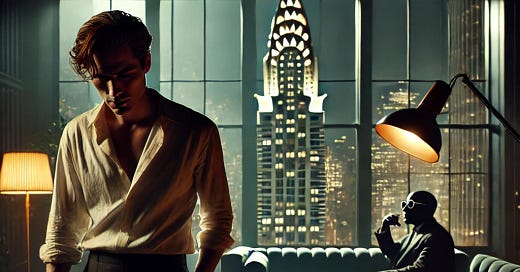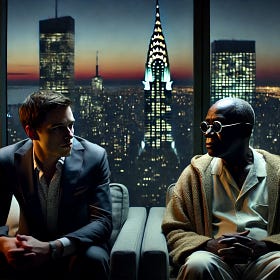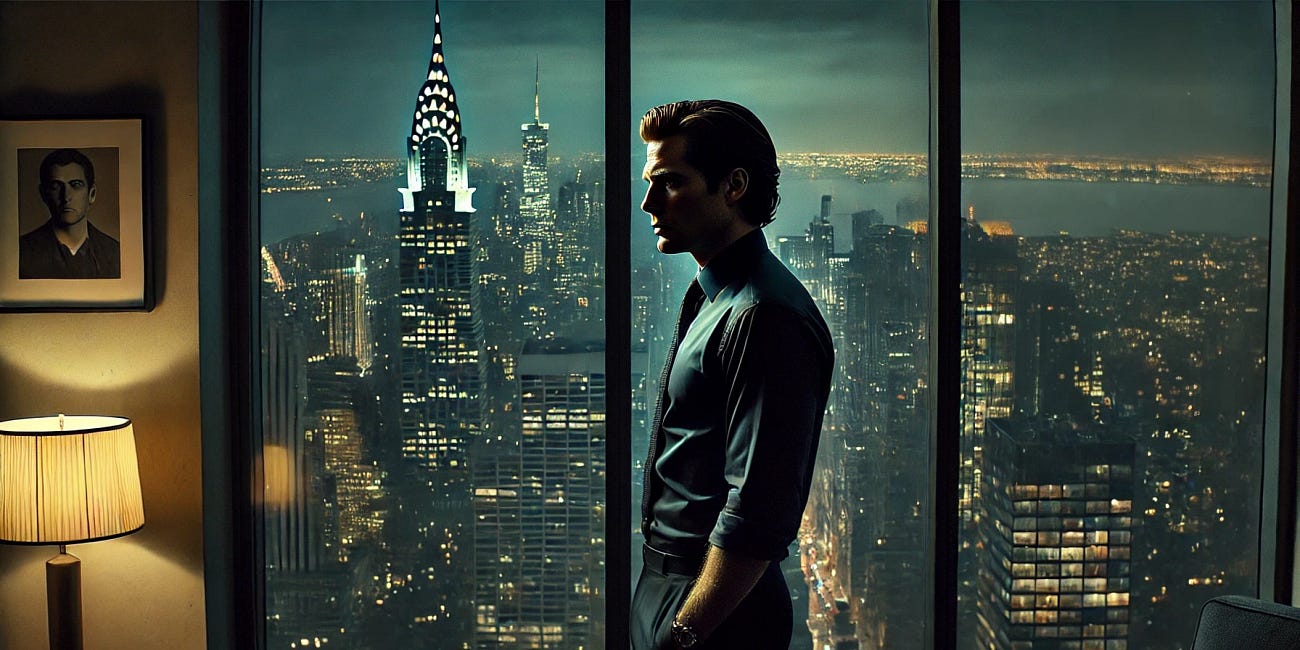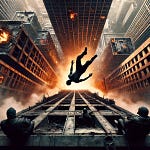The central premise of Michael Arturo’s story “Skyline” revolves around the transformative power of an unexpected relationship. Elliot Van Alen, a privileged architect from a renowned architectural family, is a "has been" whose latest design has been rejected as "derivative." He encounters Solomon, a blind man who experiences and understands the city in a profound, non-visual way. This encounter challenges Elliot's perspective on architecture, success, and his own life, ultimately leading to a new vision for his career and a more meaningful connection to the city and himself.
The narrative fundamentally challenges the idea that expertise and wisdom are solely tied to conventional measures like formal education, professional status, or physical sight. The central premise of a blind man teaching a renowned architect how to truly "see" the city is a direct subversion of these notions. Solomon, despite his lack of sight and privileged status, possesses a profound understanding of the city's soul, history, and the essence of meaningful architecture. This highlights that true innovation and understanding often come from unexpected sources and require a willingness to be open to different perspectives and forms of knowledge.
Solomon, despite his blindness, possesses a deep and intimate understanding of New York through sound, touch, movement, and historical knowledge. He teaches Elliot, who has always relied on sight and traditional architectural principles, to "hear" and "feel" the city. Solomon describes sound as "architecture," with noises "stack[ing] on each other like building blocks, creating these invisible structures throughout the city." He can discern the city's history and layout through these sensory experiences.
Skyline (Part 2)
Solomon came and went, night after night. He never revealed too much about himself—where he came from, where he slept. He seemed to belong everywhere and nowhere at once, slipping effortlessly between the city’s forgotten spaces and its most rarefied heights. There was something about Solomon that Elliot couldn’t quite grasp—something that made him fee…
Elliot is haunted by the legacy of his grand-uncle, William Van Alen, the architect of the Chrysler Building. The Chrysler Building is presented as a "masterpiece" and a "Cathedral of Commerce," but also a "monument to ambition's quiet erasure," as William never built again after a dispute and faded into obscurity. Elliot is driven by a desire to escape this fate, to "carve his name into the sky" and "change the skyline." Solomon challenges this ego-driven ambition, asking Elliot if he is trying to build something meaningful or just "chasing your grand-uncle's ghost." The race to the sky in the 1920s, particularly the story of the hidden spire of the Chrysler Building unveiled the day before the stock market crash, is used as a metaphor for "pride coming before the fall" and the fleeting nature of dominance.
Skyline (Part 3)
The streets were still damp from the night before, glistening in the early morning light. Down here, in the oldest part of Manhattan, the air carried the weight of history—stone, and steel pressed tight, the ghosts of a thousand deals made and broken.
The walking tour of Manhattan becomes a "master class in how to experience a city." Solomon guides Elliot not just through physical space but through the city's felt reality. He encourages Elliot to listen to the city's "hum" and feel its pulse under his feet, a stark contrast to Elliot's usual view from "penthouse parties from the back of a cab." Solomon highlights buildings that "move with the chaos, not against it," like the Flatiron Building dancing with the wind, and spaces that "give something back," like the High Line and Little Island. The walk forces Elliot to see the city not just through his eyes, but through his senses, challenging his limited perspective shaped by privilege and visual dominance.
Skyline (conclusion)
In the days following the walk with Solomon, Elliot moved through his Park Avenue apartment like a man caught in a riptide—adrift yet restless, tugged by currents he couldn’t name. The walk had left a residue, a hum that wouldn’t quiet. He’d gone to bed that night with his notebook open on the dining table, pages scrawled with jagged lines and half-form…
The racial and class dynamics inherent in the relationship between the wealthy white architect and the blind Black man who lives on the streets become confrontational when Solomon calls out Elliot's guilt about "using" him, which is described as "real, so necessary," forcing Elliot to confront his own privilege and leading to growth. Solomon's sharp observation about the potential for their collaboration to be labeled as Elliot finding a "magic negro" underscores the societal stereotypes and challenges they face.
Michael Arturo is a writer of short fiction, plays, and essays with a focus on social criticism, political commentary, and satire. His work often explores the intersection of history, identity, and ambition in the modern world. Michael draws inspiration not just from contemporary life but from a personal legacy rooted deep in New York’s architectural history: his great-grandfather was a foreman on the construction of the Chrysler Building. Family lore holds that he was present the day architect William Van Alen’s secret spire was raised—an audacious move that briefly made the Chrysler the tallest building in the world.
If you appreciate the content
Buy Me A Coffee
Support by hitting the like button or leaving a comment.

















Share this post